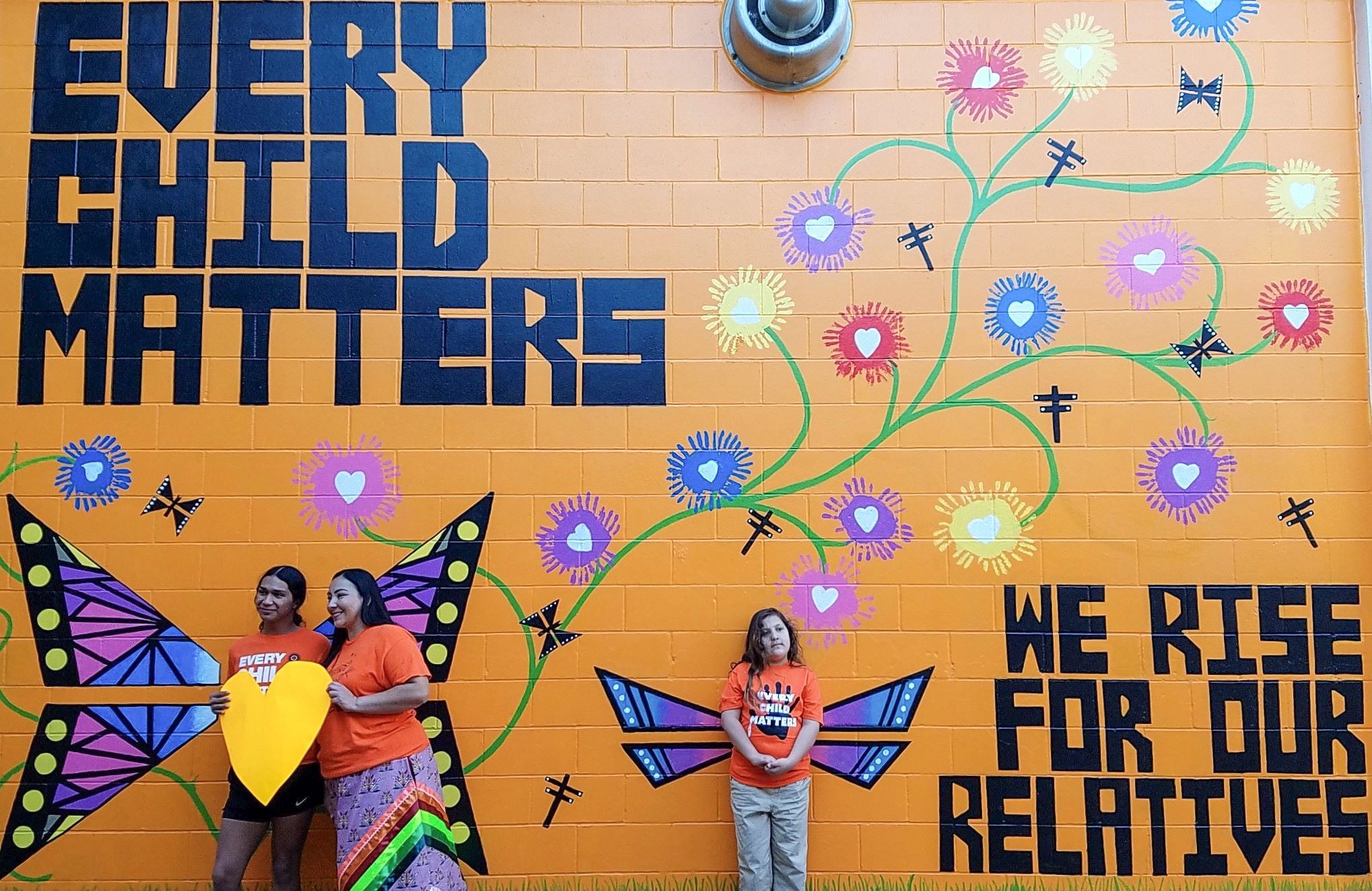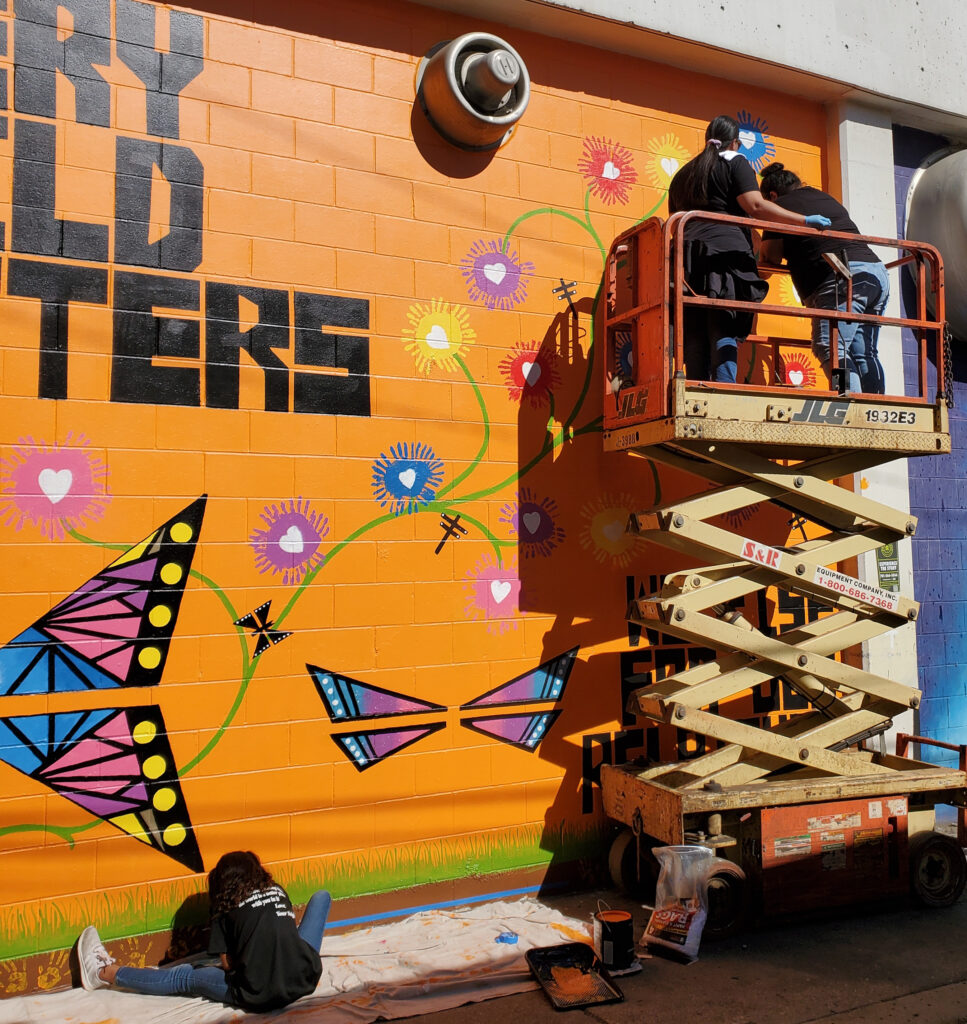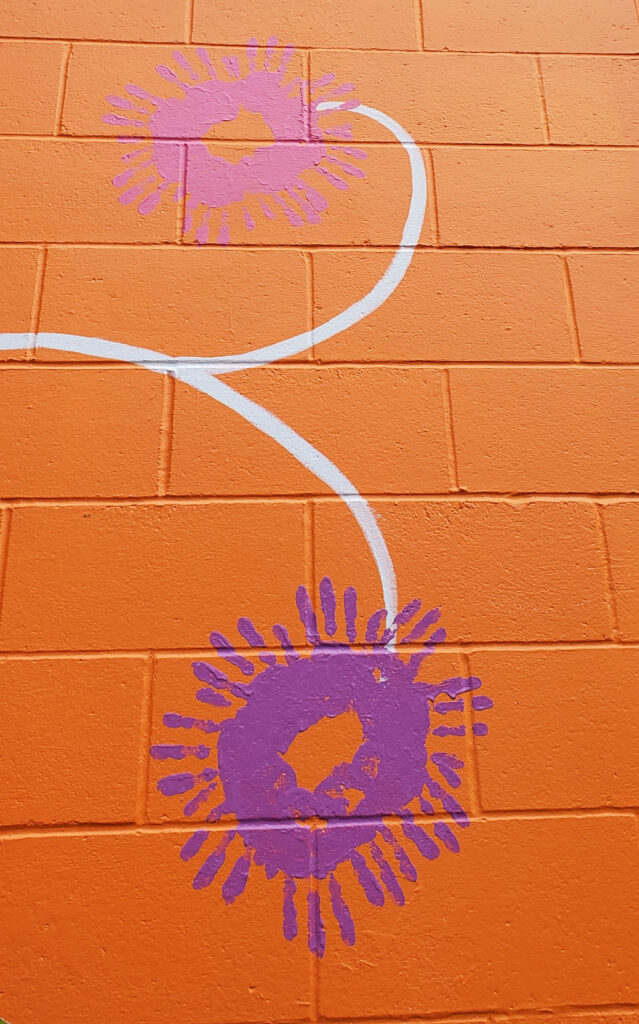A mural creates vibrant neighborhoods and spaces for community. They can brighten up an otherwise neglected space. They can build and even heal communities. There’s no doubt that visiting these spaces will create conversations. Whether the message in the art is a simple expression or one of social justice, they are the center of attention.
There’s a popular art space in Bismarck called Art Alley 5.5 that encompasses all of those things, especially now. A new addition to the alley is aimed at shining a light on a dark and devastating chapter of United States history, as well as North Dakota history, while giving the viewer a welcoming sense of peace and healing. While each mural is open to interpretation, this one doesn’t leave room for speculation.
MELANIE MONIZ (NUETA OF THE MHA NATION), MURAL ARTIST“…When you see the butterflies and dragonflies flying up along that vine, they represent protectors. They represent us. It is our job to speak the truth and seek justice for our relatives that never made it home. We must rise for our relatives.”

On September 30, the mural called ‘Every Child Matters’ was unveiled to the public after taking five full days to complete. Its purpose is to bring awareness to the Indian Boarding School atrocities committed against Indigenous children by federal and religious affiliated institutions who were “tasked” to assimilating them. Children were ripped away from their parents and forced to endure horrific conditions. Many children never made it home. The intention of the mural is to educate the public and to start the healing journey for survivors, descendants of survivors and their extended families.

The artists who painted the mural are the grassroots collective of Indigenous women from several tribal nations, who call themselves Orange Shirt Day: North Dakota. They each have a unique perspective or lived experience to add to the collective. They have made it their mission to make space for healing, draw awareness, and demand truth. For the past three years, they have organized spaces and events for survivors of the boarding school era. This year’s events included an honor walk, a movie screening of Bones of Crow, a feature film in Canada highlighting one woman’s fight for justice in the residential boarding school, and this mural.
“The color orange is commonly used to raise awareness about the Indian Boarding School era, which is great because the color on the wall demands attention. We wanted the mural to be something folks feel drawn to. The large butterfly wings and child size dragonfly wings were chosen to encourage people to take photos with it,” said mural artist Agnes Yellow Bear, Plains Cree from Kawacatoose First Nation residing on the MHA Nation, describing the mural.
The mural unveiling coincided with National Day of Remembrance of Indian Boarding Schools in the U.S., and the National Day for Truth and Reconciliation in Canada. September 30 is also known as Orange Shirt Day, whose origins began in Canada with one woman’s incredible story.
Truth in Healing
“It starts with orange handprints in the soil and a child’s handwriting that says ‘They tried to bury us, not knowing we were seeds’. Those handprints represent the little ones that never made it home and the saying speaks to those little ones waking up the world. Truth is growing from their prayers and people are waking up. That’s representative of the vine that’s rising from the soil,” said organizer and creative Melanie Moniz, Nueta of the MHA Nation residing in Twin Buttes. “Each flower handprint represents an [Indian] boarding school in North Dakota. And when you see the butterflies and dragonflies flying up along that vine, they represent protectors. They represent us. It is our job to speak the truth and seek justice for our relatives that never made it home. We must rise for our relatives.”



In May 2022, the Department of Interior released Volume 1 of the Department of Interior investigative report, called the Federal Indian Boarding School Initiative, that revealed that at least 500 Native American, Alaska Native and Native Hawaiian children died while attending Indian boarding schools run or supported by the U.S. government. The interior department found at least 53 burial sites at or near the US boarding schools, both marked and unmarked, and said the number of children who died at federal boarding schools could be in the thousands or tens of thousands.
Even though the truth is uncomfortable, artists and organizers believe that projects like these can still help communities move forward. Indigenous people continue to be affected by the assimilation tactics and traumas of these historic abusive institutions. This mural, in part, tells that story in an inviting and tactful way.
The writer of this story, Alicia Hegland-Thorpe, is an organizer and artist in this mural project and the Orange Shirt Day: North Dakota collective.
